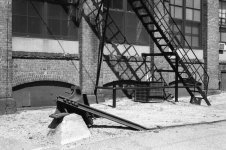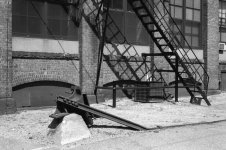gilpen123
Gil
Recently I have been using more chromogenics trying out XP2 super and BW400CN. I've got good results using both rating at it's ISO 400 on bright sunny days but tend to lose details of the sky when I rate at 250/320. I am not sure of the real rating the manufacturers has on these films. In terms of scannned negs, the XP2 super tends to scan better. I plan on buying either the Nikon Coolscan V or the Epson V500/700 in the near future. At the moment, I have my negs scanned supposedly hi-res by a Noritsu machine which does not do justice to the images. I will tend to do some PP adjusting levels to get the results I wanted. I still use though Tri-X and HP5 but I do not process anymore and I am not good at it so I find the convenience of the chromogenics an advantage. Of course on critical shoots I still use traditional films and have it processed by my favorite lab under my guidance. My question is what rating is best for these negs?




